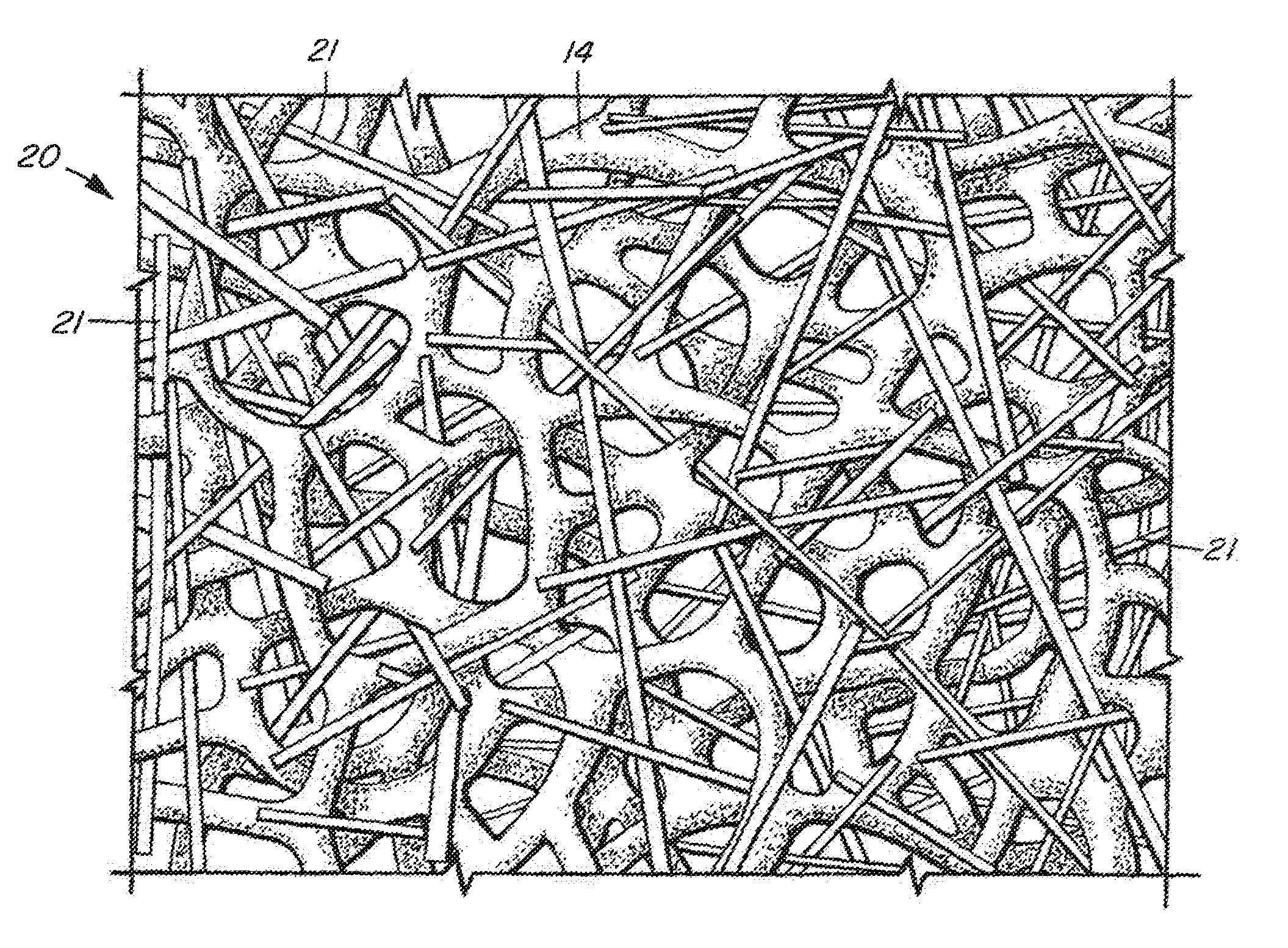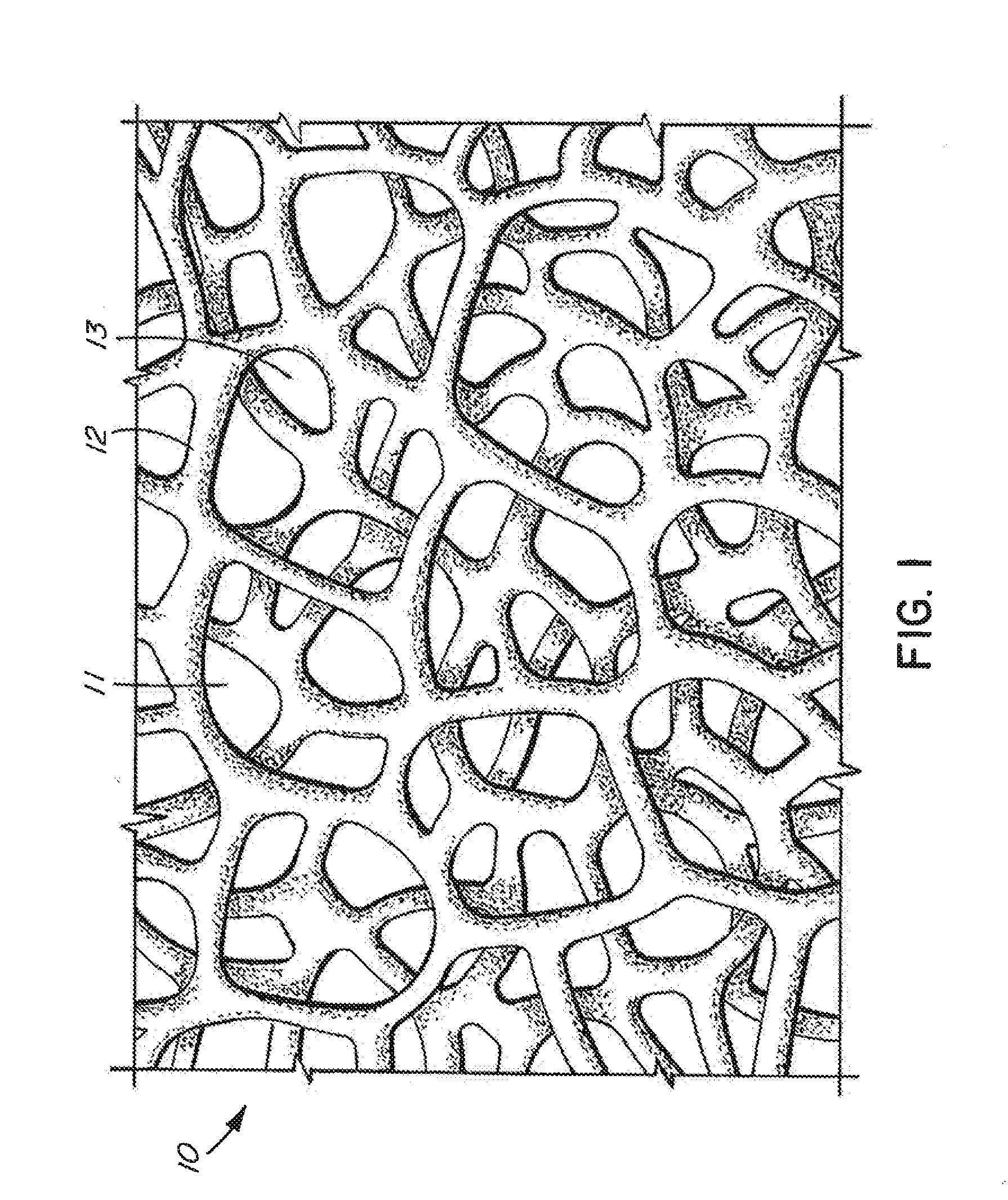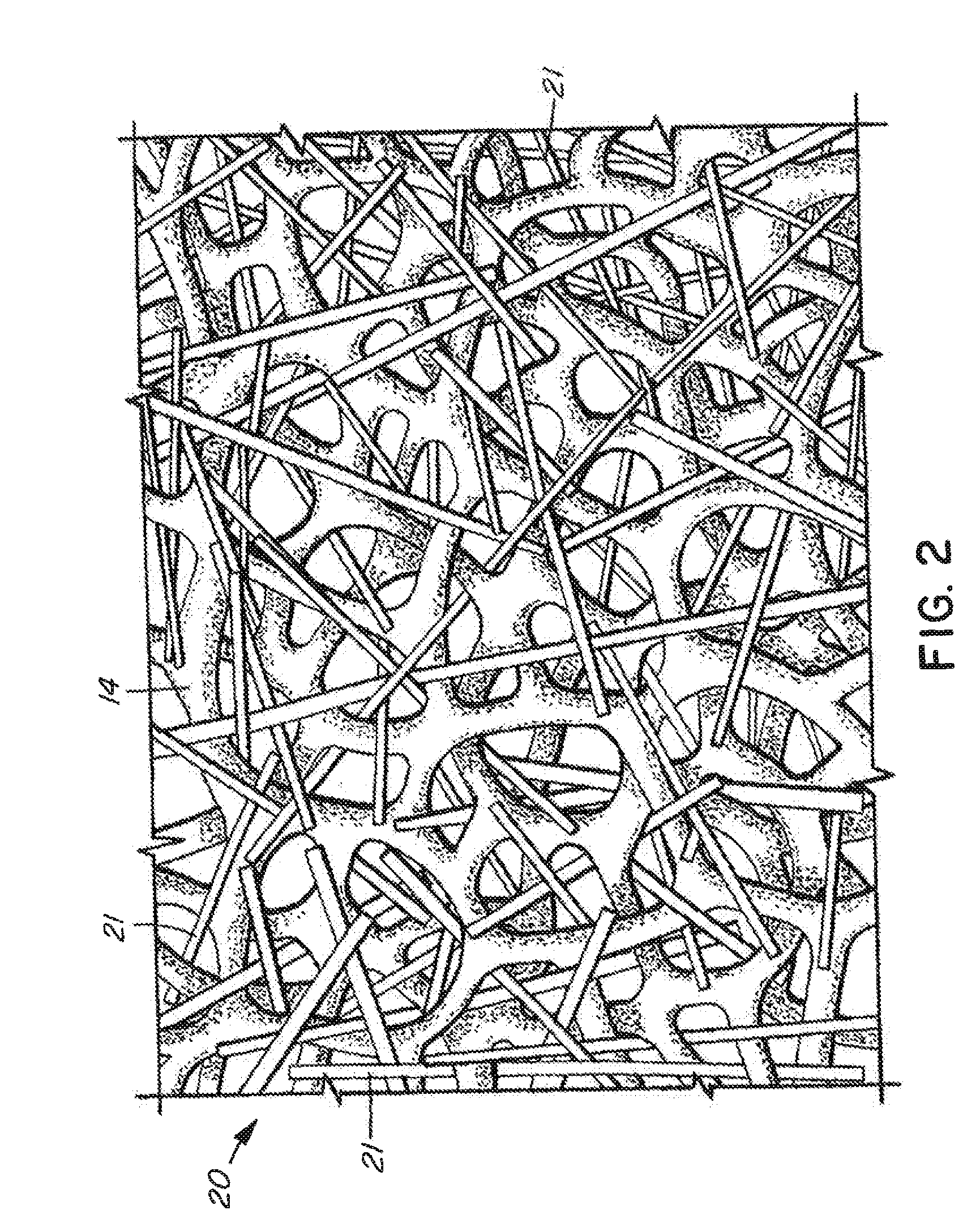Reticulated open-cell foam modified by fibers extending across and between the cells of said foam and preparation methods thereof
a closed-cell foam and fiber technology, applied in the field of reticulated foam structures, can solve the problems of high back-pressure of fluid flowing through such materials to create the intended final product, inherently limited cell diameter range, and collapse of foam, and achieve the effect of increasing the volume of foam
- Summary
- Abstract
- Description
- Claims
- Application Information
AI Technical Summary
Benefits of technology
Problems solved by technology
Method used
Image
Examples
Embodiment Construction
[0095]FIG. 1 is a three-dimensional sketch of commercially available reticulated polyurethane foam 10, having open cells 11 and ligaments or struts 12. Diameters of the open cells 11 can be in the range of 200 microns to 4 millimeters, which dimensions can be set by the production parameters. Pores 13 are in the range of 200 microns to about 3 millimeters across, which dimension is determined by the physical process of expanding bubbles during foam formation having common walls resulting from contact, which walls open, thereby forming a pore opening between adjacent cells.
[0096]FIG. 2 illustrates a reticulated polyurethane foam 20 according to the preferred embodiment of the invention. The primary polymer foam structure characterized by ligaments 14 in FIG. 2 is preferably of the same dimensions as the finer-structured commercially producible prior art foams having cell diameters of about 200 microns to 4 millimeters (depending on the production process used to make the foam). In th...
PUM
| Property | Measurement | Unit |
|---|---|---|
| average length | aaaaa | aaaaa |
| average length | aaaaa | aaaaa |
| pore sizes | aaaaa | aaaaa |
Abstract
Description
Claims
Application Information
 Login to View More
Login to View More - R&D
- Intellectual Property
- Life Sciences
- Materials
- Tech Scout
- Unparalleled Data Quality
- Higher Quality Content
- 60% Fewer Hallucinations
Browse by: Latest US Patents, China's latest patents, Technical Efficacy Thesaurus, Application Domain, Technology Topic, Popular Technical Reports.
© 2025 PatSnap. All rights reserved.Legal|Privacy policy|Modern Slavery Act Transparency Statement|Sitemap|About US| Contact US: help@patsnap.com



